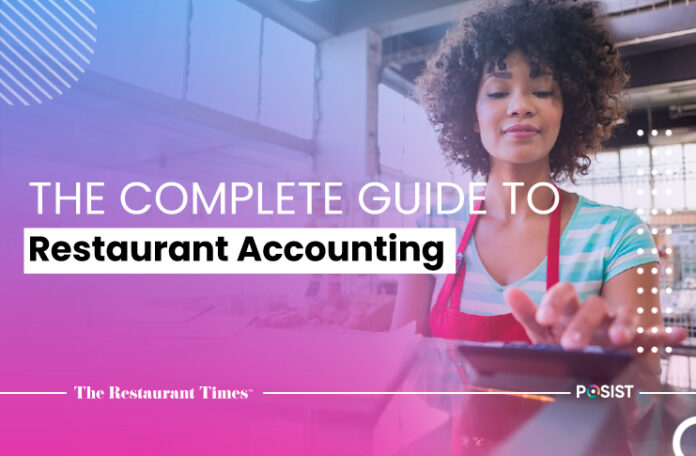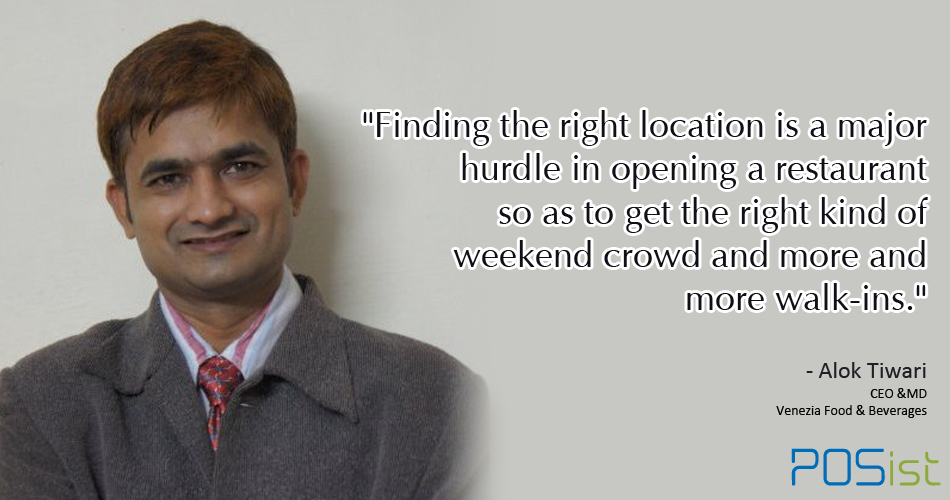Restaurant accounting is an integral part of operating modern-day restaurants and ensuring consistent growth in the business. It is a process that involves the detailed collection, analysis, and interpretation of various financial metrics of your restaurant.
Typical accounting methods have not been able to cope with the fast-changing demands of the restaurant business. Hence, restaurant accounting is becoming increasingly popular to meet these operational challenges. In fact, accounting software in restaurants has seen a 21 percent rise in popularity since 2018, second only to POS technology and payment processing.
Benefits Of Restaurant Accounting
Successful restaurant accounting can help in efficient cash management, balancing financial books, optimizing costs, and overall business planning. Apart from these obvious advantages, restaurant accounting helps in three key areas of the business.
Efficient Budgeting
Predicting future expenses and revenues can become much easier once you have a past record of financial categories. Accurate accounting methods can help you create efficient budgets for the future. You can also have a much clearer idea of future expenses as well as revenues.
Informed Decision-Making
Identifying weak spots in your business can become really simple once you have all the financial numbers right in front of you. Keeping track of your numbers and Key Performance Indicators (KPIs) will not only help you in taking timely action but also point out specific areas that need immediate improvement.
Deeper Insights
With accurate accounting methods, you can have a much better understanding of the ins and outs of your business and discover new trends in your industry. You can find out what your best-selling menu items are as well as narrow down on your most costly expenses. You can also regulate the price of your menu items once you know exactly how much each meal has cost in preparation.
Key Restaurant Accounting Metrics
The overall cost of operating your restaurant is a key factor that determines the financial health of your business. Even though the number of sales your restaurant makes is crucial for its success, your expenses relative to those sales determine the actual profits. With restaurant accounting, you can track your expenses and classify them into several categories.
Cost of Goods Sold (COGS)
COGS refers to the total expenses and costs that are involved in the production of goods in a business. For a restaurant business, it is the cost of all the ingredients that are involved in preparing the food and beverage items during a particular time.
You can easily calculate the COGS for the week by subtracting the inventory at the end of the week from the beginning inventory.
Keeping an accurate track of the COGS helps you regulate the pricing of food items. Once you have a clear idea of the cost of your inventory, you can effectively decide the profits you want to make on each plate.
Labor Costs
Labor costs include the expenses and salaries paid to all the labor that is involved in running your restaurant. This includes your cooks, waiters, servers, and everybody else who is on your payroll. Labor costs also include payroll taxes and employee benefits.
Occupancy Costs
Occupancy costs are the sum of all the expenses related to the location of your restaurant. This includes the rent, property insurance, property taxes, and other utilities.
Keep in mind that the occupancy costs are fixed costs. Hence, you can not increase your profits by reducing these expenses.
Operating Cost
This category includes everything else related to the day-to-day operation of your restaurant. It includes things like laundry, marketing costs, equipment repairs, advertising costs, flatware, or even napkins!
According to 52 percent of the restaurant owners in the United States, food and operating costs are the biggest challenges to running their business. However, once you have a clear layout of all the expenses related to different categories, you can be wiser with your investments and optimize your costs.
Setting Up An Efficient Restaurant Accounting Workflow
Accounting Cycle
You can analyze the performance of your restaurant a lot better by tracking data over reporting periods of the same length. Since each month of the calendar has a different number of weekend days, monthly reporting is not optimum for comparison.
An optimum solution to this problem is dividing the calendar into four quarters of 13 weeks each, or 4/4/5 accounting cycles, that is, two 4-week months and one 5-week month. Such an accounting cycle is a lot better since each period has the same number of days.
Weekly accounting also has these benefits:
- Improved comparison accuracy
- Better assessment of each business cycle or season
- Flexibility in choosing the starting day of the reporting period
Eliminating Manual Entries
Manual addition in journals is often required in cases where the accounting systems prove to be sufficient, say, for incorrect transactions or split transactions. However, there is a high likelihood of errors whenever journal entries are done manually.
What you need is an accounting technology that completely automates journal entries. A refined accounting software pulls data from an integrated POS system that has a complete stock of financial data like sale tickets, payment types, tenders, etc. It can, then, easily automate the entry of daily sales, labor accrual, and even inventory.
Automated Inventory Management
An efficient restaurant accounting system can easily automate managing your inventory of raw materials. The counting software automatically creates a journal entry whenever a restaurant acquires, transfers, counts, or wastes inventory.
Keeping a daily track of inventory is important for restaurants to minimize the cost of goods sold (COGS).
Automated Sales Reports
You can only make effective use of sales reports and other financial reports if they are accurate and timely. Traditional accounting methods need to import data from your POS system. This makes daily tracking of financial reports unfeasible and inaccurate.
An efficient restaurant accounting software is capable of collecting and organizing financial data daily. Hence, you can make proactive decisions on the basis of your sales reports and remove time and effort from the accounting process.
Automated Bank Reconciliation
Restaurant groups often complain about the time and labor that goes into manual bank reconciliation. However, advancements in technology have allowed accounting platforms in restaurants to connect seamlessly with financial institutions and automate the bank reconciliation process.
With automated bank reconciliation, you can reconcile your accounts daily and reduce exposure to fraud and payment errors.
Keeping Track Of Key Restaurant Reports
Regular tracking and assessments of certain financial reports are crucial for the success of your restaurant business. These reports allow you to define budgets, track business transactions, predict your sales, and assess your financial performance over a time period.
Balance Sheet
A balance sheet gives you the complete picture of your finances at a particular point in time. It gives you data regarding your assets, liabilities, and your invested capital (equity). At any point in time, you can confirm the accuracy of your balance sheet by using the formula:
Assets = Equity + Liabilities.
You can use your balance sheet to identify trends by comparing it to other balance sheets. You can also use it to calculate the debt to equity ratio. This ratio will tell you whether you have the right amount of equity and also guide you towards using adequate debt to run your restaurant.
P&L Statement
The P&L statement, also known as the income statement, reflects your total expenses and earnings over a period of time. You can use the P&L statement to assess profitability, make informed decisions and strategies, and calculate your profit margin.
Cash Flow Statement
Your cash flow statement gives you information regarding the inflow and outflow of cash from your restaurant. Cash flow is positive when inflow is greater than outflow.
Once you accurately calculate your cash flow statement, you can decide whether you have sufficient cash or if you need external financing to grow your business.
Revenue Reports
You can calculate your revenues for a specific time period with revenue reports. You can also use revenue reports to determine profits, identify trends in sales, classify periods according to sales, and improve budgeting.
How To Select The Right Restaurant Accounting Software?
The right restaurant accounting software is crucial for any restaurant business to maintain accuracy in books, collect data from the system, and fulfill all the accounting needs. You can choose the right software for your business by considering the following factors.
Budget
You need to pay a subscription fee for most accounting software. Consider the features you want in your software and the monthly expenses that you are willing to spend. Make an informed decision accordingly.
Specific Needs
Choose accounting software that meets your unique needs. Think about factors like operational and reporting needs, alongside the overall size of your operation before taking the final call on your accounting software.
Integration Options
Choose accounting software that integrates easily with other management systems and facilitates data sharing. Make sure that your software is compatible with most devices.
Difference Between Restaurant Bookkeeping And Restaurant Accounting
The terms ‘restaurant accounting’ and ‘restaurant bookkeeping’ are often used interchangeably. However, restaurant accounting is a much broader concept.
In general, restaurant bookkeeping involves maintaining a record of financial transactions in the general ledger. It can also include coding (color or otherwise) those transactions and putting them in different categories. Restaurant accounting, on the other hand, involves a much more detailed analysis of the entire operation. It helps in creating financial reports, tracking performance, and defining budgets.
Why Is Posist The Right Choice For Your Restaurant Accounting?
Posist offers subscription-based accounting software that is completely platform-agnostic and can integrate seamlessly on any device. With more than 150 third-party integrations, Posist boasts of a platform that will ease your collaboration with aggregators, logistic partners, and digital wallets on a global scale.
You don’t even have to worry about data loss during an internet outage. Posist can work offline and keep your data updated. With its 24-hour support provided to customers via calls and email, Posist is helping restaurants automate time-consuming tasks and improve their bottom line efficiency.

















